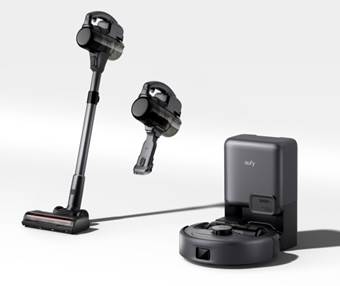Your
smartphone is a central hub for your daily life, managing everything from
communication to navigation. A failing battery can disrupt this, leading to
constant anxiety about finding the next power outlet and reduced performance
over time. Understanding how to care for your battery is an investment in your
device's longevity and your own daily convenience. Proper maintenance helps
preserve its capacity, ensuring it lasts from morning until night without
letting you down. In this article, we will explore practical, science-backed
habits to maximize your battery's lifespan and keep it powering your day
efficiently.

Understand Lithium-Ion Battery Basics
Modern
smartphones overwhelmingly use lithium-ion batteries, prized for their high
energy density and rechargeability. Constantly charging to 100% or letting it
drop to 0% regularly puts significant stress on the internal chemistry,
accelerating its degradation over time. Think of the battery not as a simple
container but as a living component that benefits from gentle, partial cycles
rather than extreme fills and drains. Understanding this fundamental concept is
the first step toward changing your daily charging routine for the better.
Adopt Optimal Charging Habits
The
way you charge your phone daily has the greatest impact on its long-term
health. The ideal practice is to engage in "top-up" charging,
plugging in for short periods throughout the day to keep the charge level
between 20% and 80%. Avoid the habit of leaving it plugged in overnight, as
staying at 100% for extended periods while still trickling charge is
detrimental. If overnight charging is unavoidable, using a slow charger is
gentler than a fast one. Furthermore, it's best to avoid using the phone intensively
while it's charging, as this combines two heat-generating activities that
compound stress on the battery.
Manage Heat and Environment
Prevent Overheating During Charging/Usage
Heat
is the number one enemy of any lithium-ion battery, causing its chemical
components to degrade much faster than normal. High temperatures are often
generated by activities like gaming, navigation, or video streaming, especially
if done while the device is charging. To prevent this, avoid placing your phone
in direct sunlight, on a car dashboard, or on other warm surfaces. If you
notice your phone getting hot during use, take a break, close background apps,
or temporarily remove its case to help it cool down. Managing thermal exposure
is a simple yet incredibly effective way to preserve your battery's capacity
for years to come.
Remove Case During Heavy Charging Sessions
While
protective cases are essential for physical safety, they can trap heat
generated during charging, particularly during faster charging protocols. This
insulating effect can cause the battery to become significantly warmer than it
would otherwise, contributing to long-term wear. For extended or heavy charging
sessions, especially if you are using a fast charger, make a habit of taking
the case off. This allows for better air circulation and heat dissipation
around the device, keeping the battery at a safer, cooler temperature while it
accepts a charge. It’s a small, five-second action that can have a major
positive impact on your battery's health.
Utilize Built-in Battery Protection Features
Most
modern smartphones come with intelligent software features designed to protect
the battery automatically. These can include settings that learn your daily
routine and delay the final stage of charging to 100% until just before you
typically wake up, minimizing the time spent at full capacity. Some devices
also offer a dedicated option to cap the maximum charge at around 80% or 90%
for those who plan to keep their devices for many years. It is worth exploring
your battery settings to enable these AI-powered protections, as they provide a
effortless way to reduce battery aging without you having to constantly monitor
the charge level yourself.
Maintain Battery with Regular Checks
Monitor Battery Health in Settings
Your
phone's operating system provides valuable tools to help you keep tabs on your
battery's condition. Within the battery settings menu, you can often find a
report on your battery's maximum capacity, usually expressed as a percentage
comparing its current state to when it was new. This information can help you
decide if you need to adjust your habits or, eventually, seek a professional
replacement. For a truly worry-free experience, a phone like the HONOR 400 mobile phone is engineered for longevity.

Calibrate Battery Occasionally if Needed
Over
time, the software that estimates your battery’s remaining charge can become
slightly inaccurate, which may lead to unexpected shutdowns even when the gauge
shows there is power left. If you observe this occurring, it might be necessary
to calibrate the battery. This straightforward process involves allowing the
battery to drain completely until the device turns off, and then charging it
uninterrupted to 100%. Doing so helps the phone’s software resynchronize with
the actual voltage levels of the battery, leading to a more accurate percentage
reading. It is recommended to perform this calibration only once every few
months if issues are suspected, as frequent full discharge cycles are generally
not advised.
Conclusion
Preserving
your smartphone's battery health is not about one single trick but about
adopting a series of consistent, smart habits. By understanding the basics of
lithium-ion technology, avoiding heat, utilizing built-in protections, and
performing occasional maintenance, you can significantly extend your battery's
useful life. These practices empower you to avoid premature degradation, reduce
performance throttling, and delay the need for a costly replacement. Start
implementing these changes today, and you will be rewarded with a reliable
device that powers your daily life for years to come.
